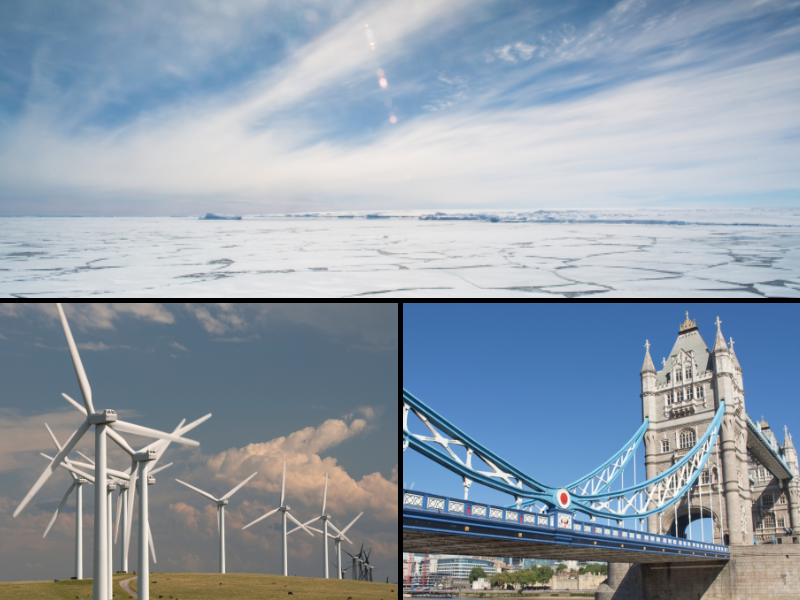Forests are expanding throughout much of the world, according to a study reported November 14 in the Proceedings of the National Academy of Sciences. The study, “Returning Forests Analyzed with the Forest Identity,” documents that in many parts of the world, there are more trees today than 100 years ago.
The net growth of forests has been particularly strong in developed countries.
The authors considered both territory covered and the density of forest coverage. Combining both density and total area, the researchers contend, provides a better gauge of overall forest health than mere acreage covered.
The study suggests the growth of forests is supporting greater biodiversity than in decades past, and that growing world forests may be sequestering increasing amounts of carbon dioxide.
Transition to Reforestation
According to the study, global forest cover fell dramatically from the 1500s to the early 1800s. It cites the example of France, where forests covered about 40 percent of the land in 1500, but under 15 percent by 1830.
Today, roughly 28 percent of the land in France is covered by forests. During this period of reforestation, France’s population grew from 20 million to 45 million people.
Other European countries have experienced the same phenomenon.
Denmark’s transition to reforestation occurred earlier than France’s. In 1810, about 4 percent of Denmark was covered in forest. Today it is 11 percent. Switzerland’s transition came later: In the 1860s, about 18 percent of Switzerland was covered by forests, while today 30 percent is.
Portugal’s forests began expanding at roughly the same time as those in Switzerland, from only 7 percent of the nation during the early eighteenth century to nearly 40 percent today.
U.S., Asia Recoveries
Reforestation has occurred in the United States as well. The authors report the clearing of U.S. forests peaked in the nineteenth century, and the Northeast and Middle Atlantic states, except for New Jersey, all made the transition to reforestation by 1907. Connecticut was the first to make the rebound, in 1860.
The Deep South began experiencing reforestation in the late 1930s, and the Midwest and West began experiencing positive growth at varying times from the 1960s through the end of the twentieth century.
Asia has had the same experience. Japan after World War II and China, beginning in the 1970s, began to experience reforestation.
“Among 50 nations with extensive forests reported in the Food and Agriculture Organization’s comprehensive Global Forest Resources Assessment 2005, no nation where annual per-capita gross domestic product exceeded $4,600 had a negative rate of growing stock change,” note the authors.
The authors identify several poor countries (such as Angola, Cambodia, and Tanzania) as having failed to make the transition. In these countries, some of the least developed nations in the world, wood is still a primary fuel source and there are few, if any, tree plantations.
Nevertheless, the study notes, “Without depopulation or impoverishment, increasing numbers of countries are now experiencing transitions in forest area and density.”
Causes of Reforestation
The authors do not develop at length the causes of reforestation, but they note it occurred when fossil fuel replaced wood as the primary fuel for heating and cooking.
Another cause of reforestation is the increased use of tree plantations, resulting in a much greater density of trees than is found in natural forests.
In addition, greater agricultural productivity has allowed less forest land to be cleared for growing crops. Also, better transportation has facilitated the transportation of wood products from areas of faster-growing timber to those areas where the climate produces slow growth, the study notes.
Randal O’Toole, director of the Throreau Institute, noted that since 1920, “the main reason for growth of forests in the United States has been the conversion of horse pastures back to forests. In other words, the automobile, truck, and tractor saved America’s forests, or at least 80 million acres of them.
“In developing countries, the main loss of forests is due to the need for firewood and conversion to agriculture,” O’Toole added. “In Brazil, a special situation exists: The law allows people to ‘homestead’ or claim land only if they convert rainforest to agricultural uses. So a rapid conversion is taking place. Changing this law would do much to protect the rainforests.”
Michael Coulter ([email protected]) teaches political science at Grove City College.
For more information …
Kauppi, P. et al. “Returning forests analyzed with the forest identity,” Proceedings of the National Academy of Sciences, November 13, 2006, http://www.pnas.org/cgi/reprint/103/46/17574



